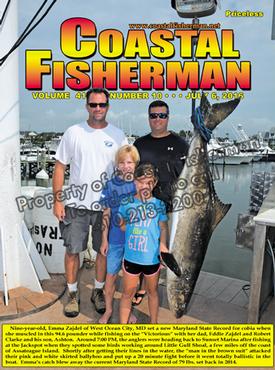


Article by Capt. Steve Katz
 Getting wired
Getting wired
A quick look under your helm or engine area will quickly demonstrate the myriad of wire colors and sizes available today. The wires are colored for a few reasons, to meet boat building standards and to make circuit identification for installation and troubleshooting less time consuming. The size, type and connection method of these wires are recommended in regulations from ABYC (American boat and Yacht Council) and the federal government’s 33 CFR (Code of Federal Regulations)
Selecting the standardized wire color makes compliance and troubleshooting much easier than labeling and charting. The most popular colors for DC wiring are:
Red – positive main
Black or yellow – negative main
Green - bonding or earth ground
Dark blue - cabin lighting and instruments
Brown – pumps – bilge pumps
Grey – navigation lights
Orange - accessory feed
Brown with yellow stripe – bilge blowers
Engine related wire colors
Light blue – oil pressure
Grey - tachometer
Pink - fuel gauge
Purple – ignition
Yellow with red stripe – starting circuit
Tan - coolant temperature
As noted above, the DC negative wires can be either black or yellow. To avoid confusion between the DC and AC wires (since the AC hot wire is black), it is preferable to use yellow for the DC negative wiring.The AC power (shore or generator) wiring on boats does not have the extensive color coding as listed above The most common colors are:
Black - hot (ungrounded)
White –neutral (grounding)
Green – ground (grounded)
The size of wire on boats must be at least 16 AWG with some minor exceptions (for electronic systems). The wire must be labeled with the type, style, voltage rating, size and temperature rating. When wire is inside an engine space, it must be oil resistant and have a temperature rating of at least 75-degrees Celsius.
The DC wiring must be rated for at least 50 volts. It must be stranded and (not solid) and the size must be appropriate for the load it is intended to carry. The most popular brands of marine wire are rated for a temperature of 105-degrees Celcius and a voltage of 600 volts – easily complying with regulations. It is not a requirement for the wire to be tinned, which is where each stand of copper electroplated with a thin layer of tin to help increase corrosion resistance.
The AC power wires should be sheathed or bundled separately from DC wires. If individual conductors are used then this means a separate bundle of AC wires and a separate bundle of DC wires. If the wires are duplex or triplex, where an outer jacket is wrapped around a set of conductors, then that is considered separate sheathing and then it is permitted to be run together.
When determining what size DC wire to use for a power circuit, there are two factors involved, the length of the wire run (round trip) and the amount of electricity the wire needs to carry. Once you know these details you can use various charts and tables to determine the correct wire size. There is a maximum amount of electricity that a given wire run can handle and there is also a maximum allowable voltage drop to determine wire size. Voltage drop is where the voltage at the end of the wire is less than at the source of power. Using a wire too small will reduce the voltage too low for the equipment to operate efficiently or effectively.
Usually the voltage drop calculation results will take precedence over the capacity for DC wires because in most cases the voltage drop calculation will come up with a larger wire size. The voltage drop tables show that the allowable voltage drop for general purpose circuits can be up to 10%, but the voltage drop in essential circuits should be no more than 3%. Essential circuits requiring no more than a 3% voltage drop include bilge blowers, navigation lights and navigation electronics as well as the wires that feed the circuit breaker panel.
There are a few rules for making wiring connections. The most basic rule is that all connections need to be mechanical. That means crimping or other mechanical fastening and not solder alone. While soldering connections is allowed, it has to be in conjunction with a mechanical connection. Twist-on wire nuts or squeeze line taps are not permitted. When connecting to a screw terminal, ring connectors are preferred or a flanged spade terminals (captive fork terminal) but not the standard fork terminal which can slide out if the screw loosens slightly.
Lastly, wiring runs should be supported every 18-inches or more and protected from chafing when passing through openings or near sharp edges.
When working on your boat, following the industry wiring standards will result in a better, safer and more reliable electrical system.
Captain Steve Katz is the owner of Steve’s Marine Service and holds NMEA, AMEI and NMEA2000 certificates along with ABYC Master Technician certification and factory training from many manufacturers.